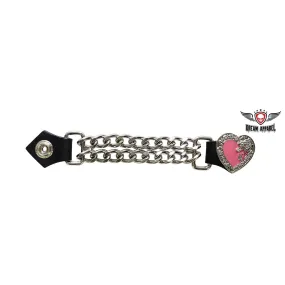Original Item: Only One Set Available. Here is a lovely USGI bring back set from WWII, consisting of the various badges that would be worn by members of German Luftwaffe bomber flight crews. All of these awards were originally issued as metal badges, but those were not exactly ideal for flight uniforms, so machine embroidered cloth versions were made as the war progressed. This set of 5 badges is contained in a glazed wooden frame, which measures approximately 16 1/4"H x 12 1/4"W x 5/8", and has a metal hangers on the back.
There are small labels under each badge, and this set consists of the following 5 Luftwaffe badges:
- One Flugzeugführerabzeichen (Pilot's Badge) with a silver wreath.
- One Beobachterabzeichen (Observer's Badge).
- One Flugzeugführer- und Beobachterabzeichen (Pilot's and Observer's Badge) with the correct gold wreath.
- One Fliegerschützenabzeichen für Bordfunker (Radio Operator/Airgunner's Badge) with the correct lightning bolts in the eagle's talons.
- One Fliegerschützenabzeichen für Bordschützen und Bordmechaniker (Airgunner's and Flightengineer's Badge) without the lightning bolts.
More on Luftwaffe Flight Crew Badges:
The Pilot Badge (Flugzeugführerabzeichen) was a World War II German military decoration awarded to Luftwaffe service personnel who completed flight training. It was instituted on 26 March 1936 by the Commander in Chief of the Luftwaffe Hermann Göring. It was worn on the lower part of the left breast pocket of the service tunic, underneath the Iron Cross 1st Class if awarded.
The Observer's Badge (Beobachterabzeichen) was a German military decoration that was awarded before and during World War II to members of the German Air Force (Luftwaffe). They qualified for the badge after completing two months of qualifying service and five operational flights in the role of observer, navigator or bombardier; also, it could be awarded after a member of the German Air Force was wounded while acting in the capacity of an observer during a qualifying flight. It was worn on the left breast tunic pocket of an air force or political uniform tunic. A citation was issued with the awarded badge. Thereafter, Luftwaffe service personnel who had already been awarded the Pilot's Badge and Observer's Badge could qualify for the Pilot/Observer Badge. After 31 July 1944 the regulations were changed and the recipient had to have held both qualification certificates for at least one year to qualify for the Pilot/Observer Badge.
The Pilot/Observer Badge (Flugzeugführer- und Beobachterabzeichen) was a World War II German military decoration awarded to Luftwaffe service personnel who had already been awarded the Pilot's Badge and Observer Badge. It was instituted on 26 March 1936 by the Commander in Chief of the Luftwaffe Hermann Göring. It was worn on the lower part of the left breast pocket of the service tunic, underneath the Iron Cross 1st Class if awarded. It was to replace the older 1933 Aircrew Badge. The badge was originally manufactured in bronze, and later zinc. The badge can be distinguished from the Pilot's Badge by the gold wreath; the Pilot's Badge had a silver wreath. There was also a cloth version of the badge which used embroidered bullion for the officer's version and cotton for the NCO's version. The presentation case was dark blue, with a blue satin top liner and a blue velvet bottom liner on the inside.
The Radio Operator & Air Gunner's Badge (Fliegerschützenabzeichen für Bordfunker) is a commonly accepted title for the Luftwaffen-Fliegerschützen-Bordfunker-und Bordmechanikerabzeichen (Combined Air Gunner, Radio Operator and Flight Engineer Badge). It was a German military decoration awarded to radio operators, air gunners and mechanics (flight engineers) who were members of the German Air Force (Luftwaffe) after they completed two months training or had taken part in at least five operational flights. If wounded during an operational flight, the badge could be awarded and worn earlier. Later in June 1942, a separate badge was introduced for air gunners and flight engineers. That badge had the same qualifications.
The Air Gunner's and Flight Engineer's badge (Fliegerschützenabzeichen für Bordschützen und Bordmechaniker) was a German military decoration awarded to air gunners, mechanics (flight engineers) or aircrew meteorologists who were members of the German Air Force (Luftwaffe) after they completed two months training or had taken part in at least five operational flights. If one was wounded during an operational flight, the badge could be awarded earlier. For Luftwaffe members who were air gunners and mechanics (flight engineers) this badge replaced an earlier separate badge which had been introduced back in 1935, without lightning bolts. The qualifications for the two badges were the same for recipients.






















